Growing up in a small town in the Philippines, Dr. Jim Jaralene Porquez saw firsthand the detrimental effects that lack of adequate health care can cause. That’s why the third-year resident physician is passionate about providing family care in a small, rural community and feels that she’s found the perfect place to do that, right here in Duplin County.
“In the Philippines, there is a lack of health care in general, especially where I lived because it’s on an island in a very, very small town,” Porquez explained. “My parents have suffered hypertension, diabetes, all those chronic diseases. It was very hard for them to seek medical care, so at a young age, I was already exposed to that kind of environment where health care is limited. It kind of opened up my eyes to what I wanted to be in the future.”
Porquez and her family moved to the U.S. when she was in high school, living in California, before she returned to the Philippines to study for four years in undergraduate school.
After that, she studied medicine at the American University of Antigua. Following that, she did her clerkship in Miami, Fla., and New York, before being matched with the ECU Health Rural Residency Program, and thus, winding up at Goshen Medical Center in Beulaville, practicing family medicine alongside the well-regarded Dr. Carl Pate. “I specifically choose ECU Health because of its rural community,” she said. “There’s a lot of growth for me, and specifically an underserved population. So I’m setting roots here in Duplin County.”
It was her childhood dream to be a doctor, Porquez said, and especially to help serve in a rural population like Duplin County.
“I chose this as my top program,” she explained. “ECU Health is very robust in terms of their training. The rural residency class is new, but it’s tied up with the family medicine program that has been there for years. I was particularly interested in the rural program, because of the underserved population.”
When choosing between the sites in the rural residency program, Porquez said Duplin County stood out. “I really wanted a small community and a very good connection,” she said. “I’d met with the faculty and staff during my interview; they were very welcoming and I just had a connection with them easily. Getting to know Dr. Pate, and how he knows everybody, and everybody looks up to him, and he’s very well respected. It kind of gave me the idea of what kind of area I was wanting to work with.”
Practicing family medicine in Duplin County may be a dream come true for Dr. Porquez, but it’s not without its challenges, of course. “The biggest challenge is the limited specialists,” she said. “We have a few specialists around the area, but sometimes it’s hard to send the patients out to them because they won’t have the availability you need to send a patient. So sometimes, we have to step in as a cardiologist, a pulmonologist, an endocrinologist for diabetes in the meantime until they get seen by the specialist providers.”
Many patients also do not have health insurance and have to pay out of pocket for their medical care. “We take uninsured patients and offer them a sliding scale so they’ll be able to afford to get the medical care they need,” Dr. Porquez said.
Another challenge is trying to find the most cost-effective medication for patients. “There’s a lot of newer medications, but they’re very costly and our patients here in Duplin County — or any rural area, really — wouldn’t be able to afford that medication,” Dr. Porquez said. “So we have to work our way around, seek other sources, and figure out what kind of medication will work.”
As for the future, Dr. Porquez is staying put in Duplin. She recently accepted an offer to join ECU Health’s family practice program in Kenansville once she graduates from her residency in July.
She won’t be far from her patients, and she wouldn’t have it any other way. “Some patients told me that they would follow me wherever I go. I love taking care of them. If there were an option, I’d just take them in my backpack. I’d gladly do that. That’s one of the reasons I really want to stay here in Duplin County, is because of them.”
 Twitter
Twitter Facebook
Facebook Instagram
Instagram
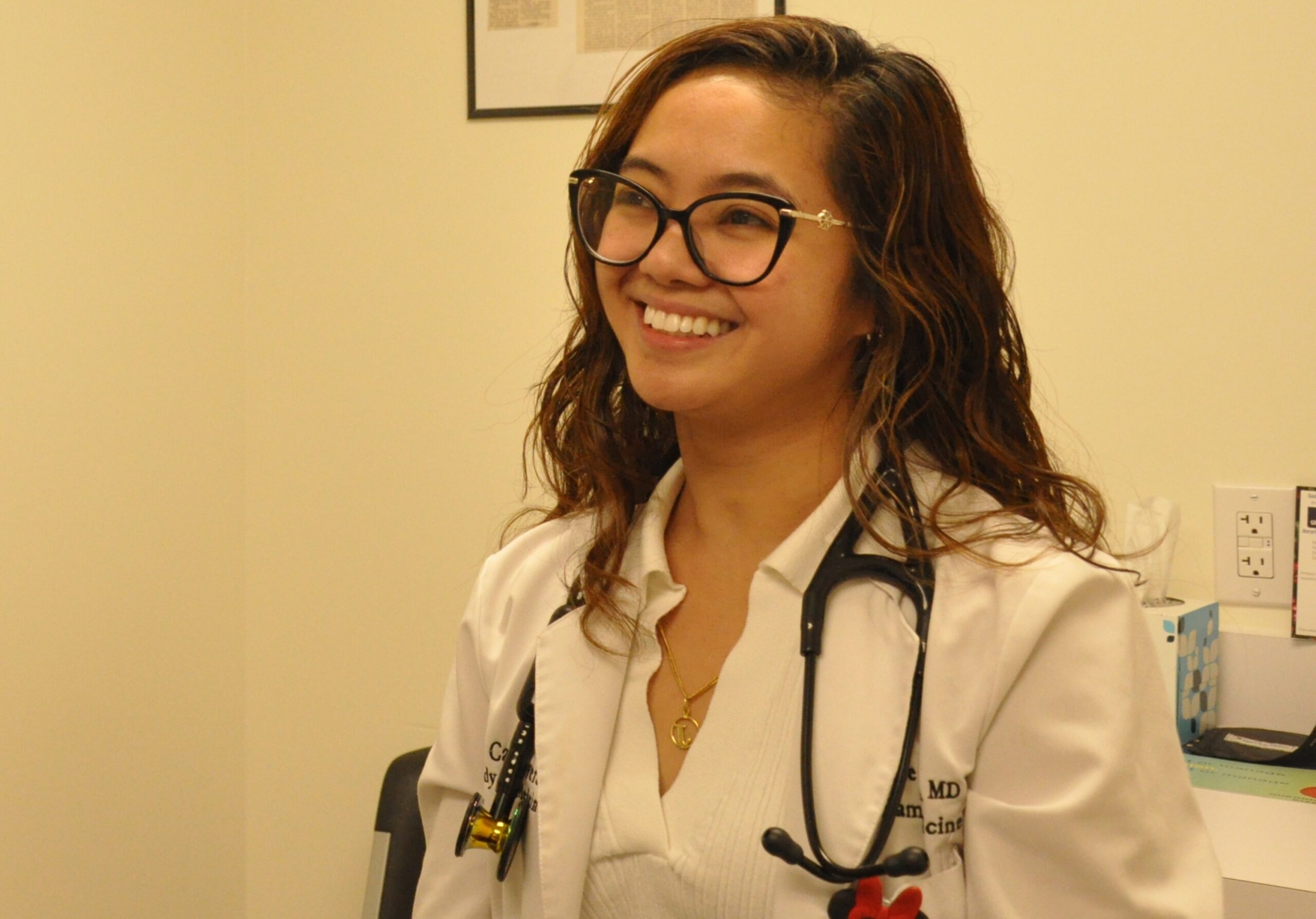
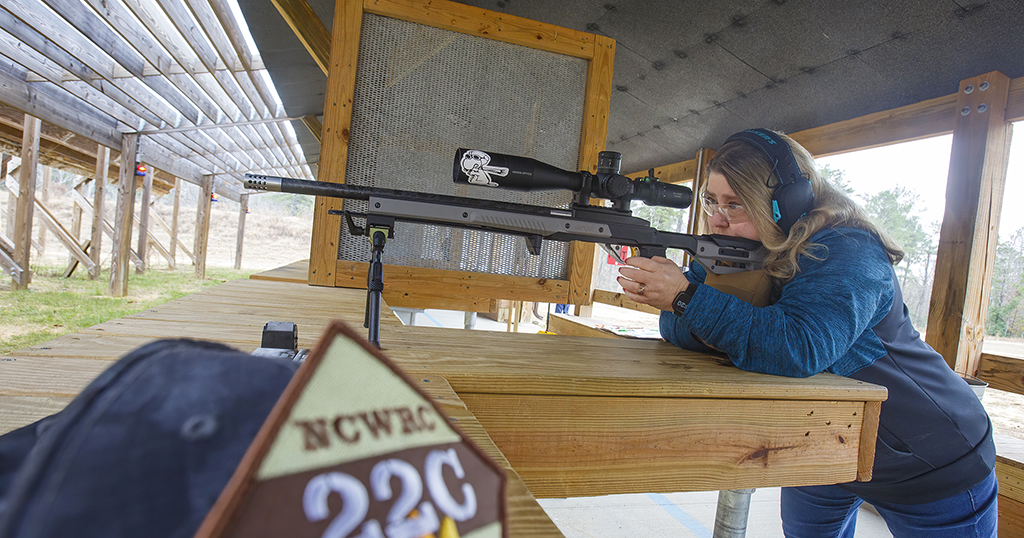
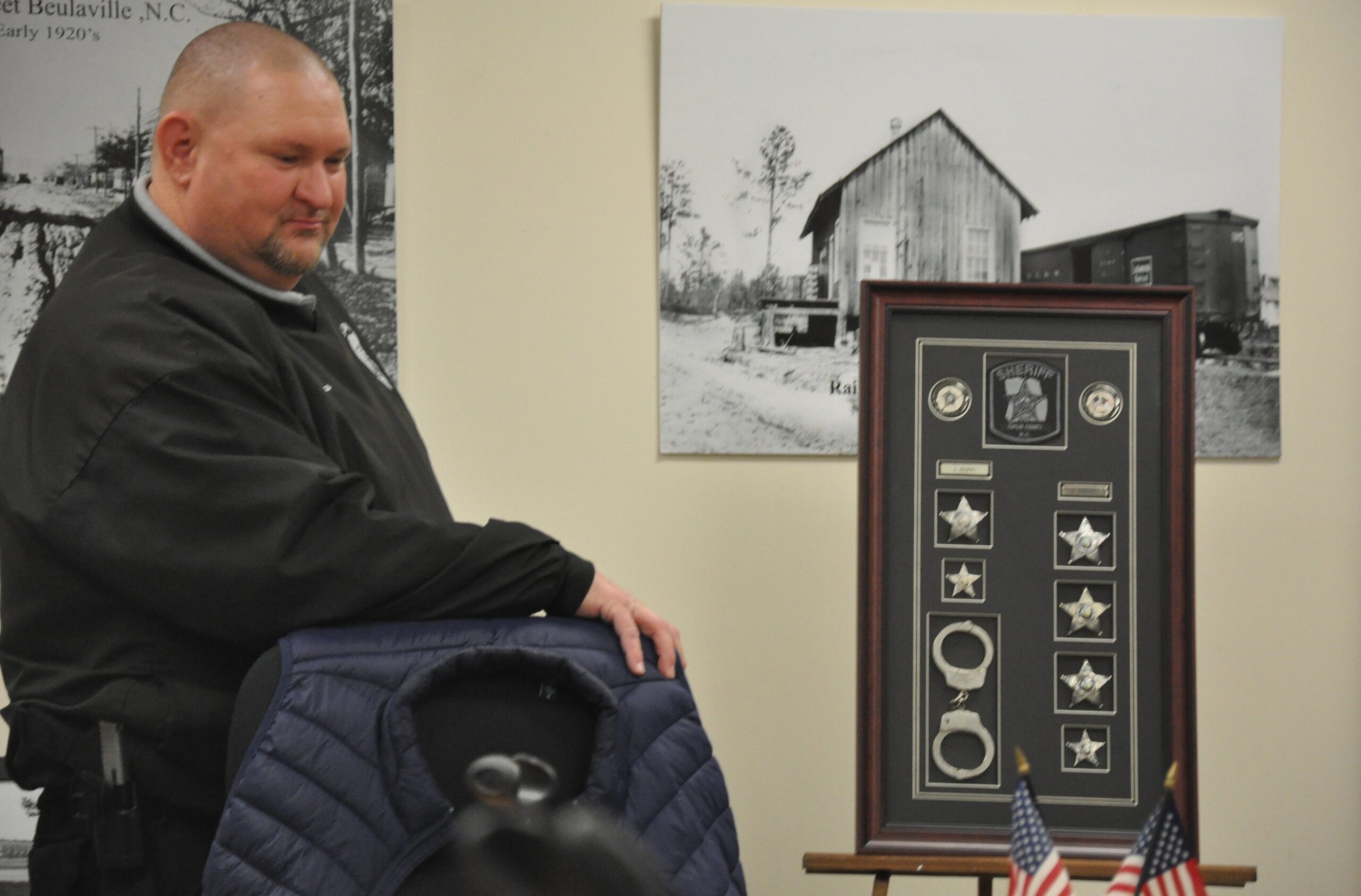
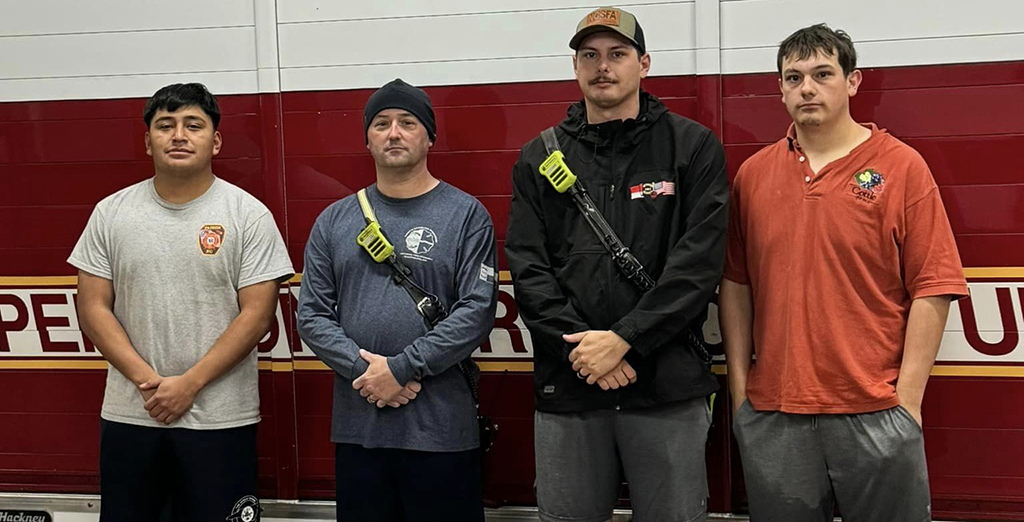

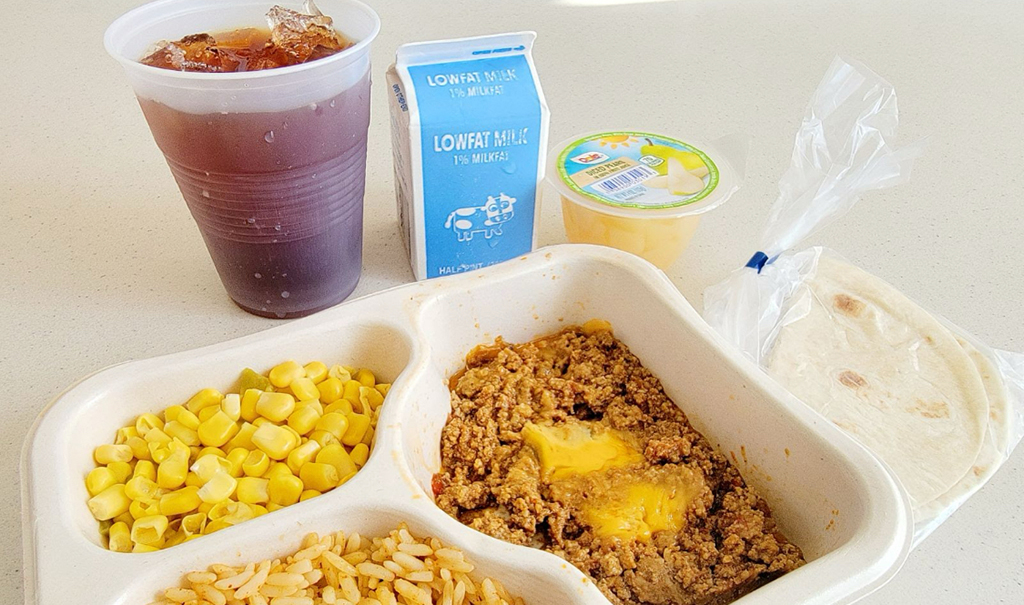





Beulaville Police Chief Jamie Rogers took a rare step into the limelight at the town board meeting on Jan. 8. Rogers is set to retire Feb. 29, or as Town Manager Lori Williams puts it, be “reclassified” and remain with the town of Beulaville, in a more limited capacity.
“Although he is retiring, as I’ve told a lot of folks, he’s just being reclassified,” Williams said during the meeting. “We’re not letting him go anywhere too far. He may have to share an office with me, but he’s going to stay around.”
Williams asked the Board of Commissioners for a recess during the regular monthly meeting last Monday, saying she had to make a presentation. She left the meeting room for a few minutes, returning with Rogers’ family members and all of the Beulaville Police Department employees.
“His employees wanted to take this opportunity in public to just recognize his achievements, what he’s been able to do over the past 31 years,” Williams said.
Rogers was presented with a framed collage of his badges and handcuffs. “He kind of started this little project,” Williams explained. “The guys picked it up and kind of ran with it, collecting his badges, start to finish, from when he was a deputy to a jailer to when he got his badge as chief of police.”
Stunned, Rogers said with a laugh, “Y’all finally got me.”
Of his badges and handcuffs, Rogers said, “Just so y’all know, I started this as my daddy’s badges. These are the same handcuffs that he wore, that I started with also when I was a deputy at the Sheriff’s Office. This has always been my dream to get this done.”
To Rogers and the officers present, Mayor Hutch Jones said, “I can’t say enough about you all. You make all of us in the town look really, really good. I’m proud to know that you all are on the streets day in and day out.”
Earlier in the meeting, Williams gave an update on the search for a new police chief, saying that interviews of the seven applicants started on Tuesday, Jan. 16, and that she hoped there would be a decision by the end of January.
One of the other major items of business at the January meeting of the Beulaville town board was a request from Douglas Clark to purchase a portion of town-owned property on Lyman Road. After his initial request was denied at last month’s meeting, he proposed two other options for the town to consider.
“As I had indicated at the last board meeting, we’re not interested in selling,” Mayor Jones said. “I had asked at that point in time, which I’m going to continue to reiterate tonight, knowing Mr. Clark’s track record, I would like the board to consider declining the current offer and create a timeline on when we’ll hear any other offers from Mr. Clark.”
“It’s going to continue, whether or not we put a timeline on it,” Town Attorney Justin Hunter said. “I personally would not recommend putting a timeline. I would simply say your offers are rejected. At such time we become interested in selling this property, we will contact you and any other interested buyers, period.”
Hunter volunteered to write a letter to Clark to that effect. “This is a waste of this board’s time,” he added. “We’re not interested in selling the property and I’m happy to write the letter.”
Commissioner Gene Wickline made a motion for Hunter to write and send the letter, and after some discussion to clarify the board’s intent, it was unanimously approved.
In other business at the Jan. 8 Board of Commissioners meeting:
The Beulaville Board of Commissioners meets the first Monday of the month at 6:30 p.m. at Town Hall.